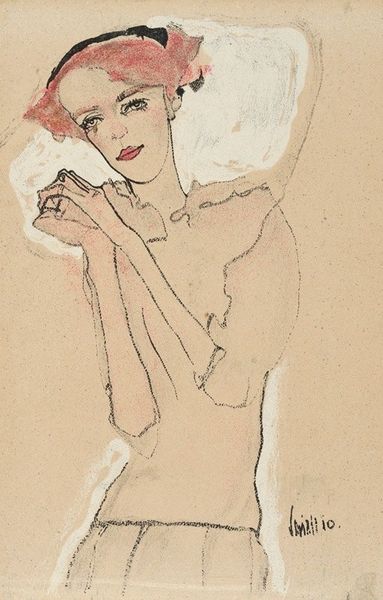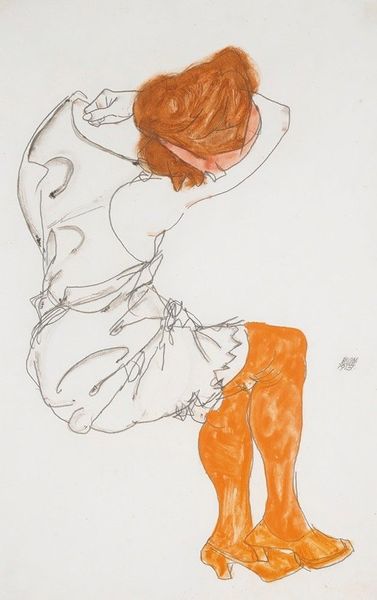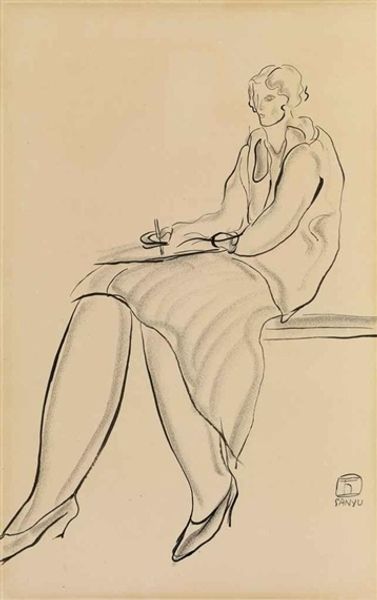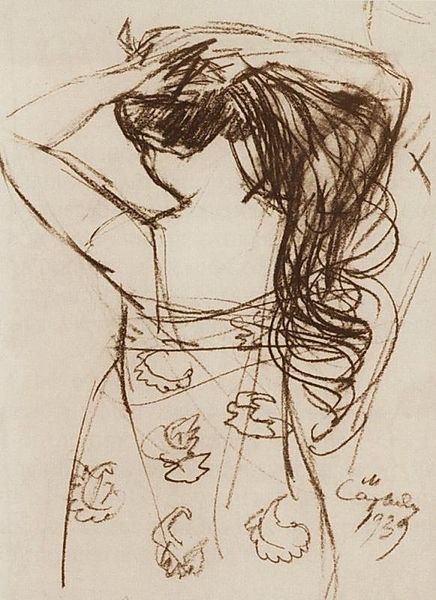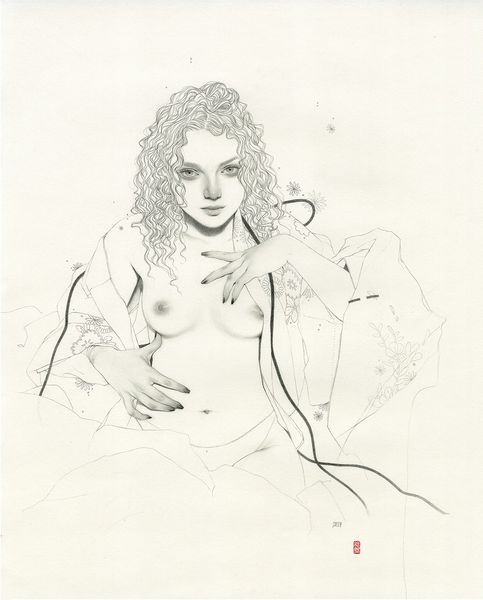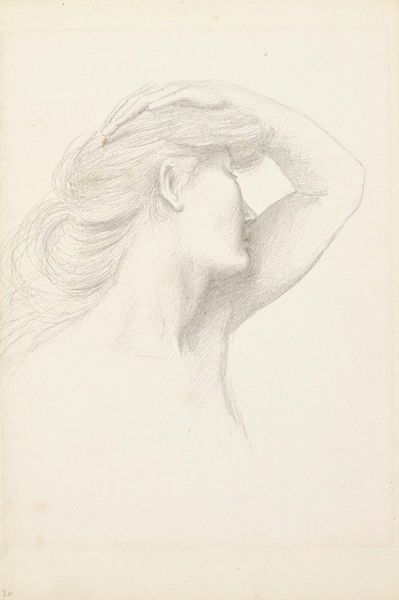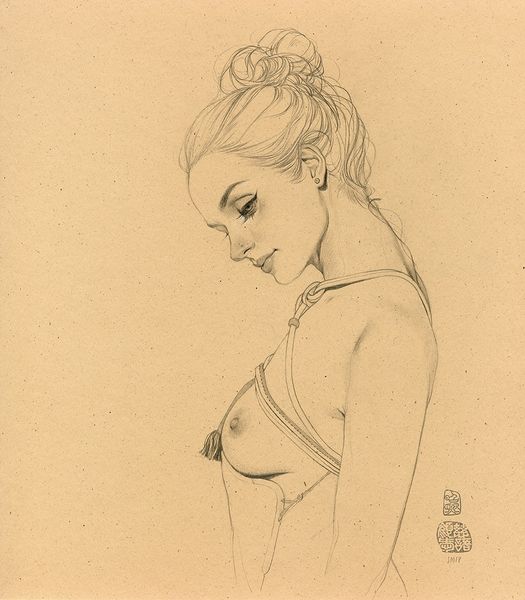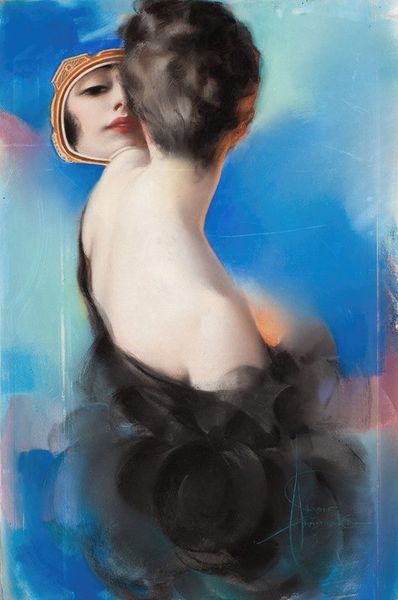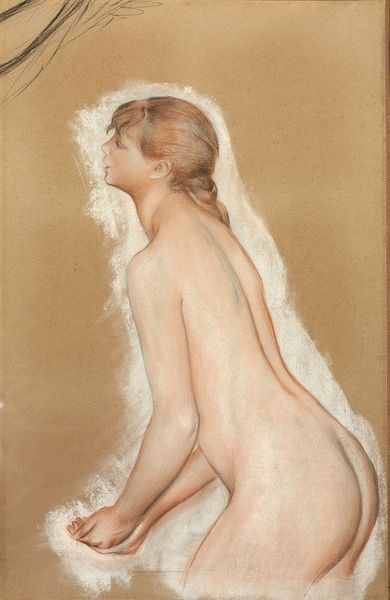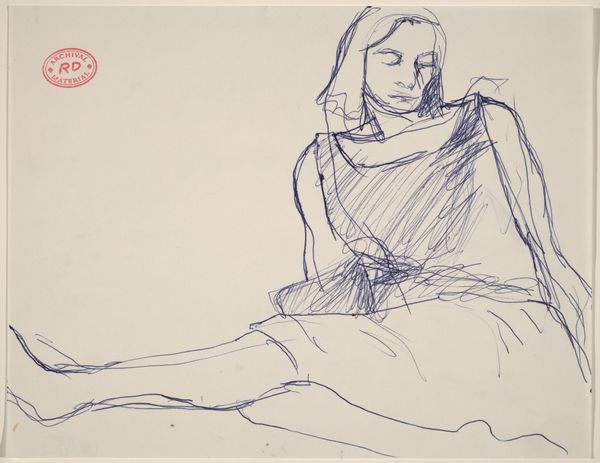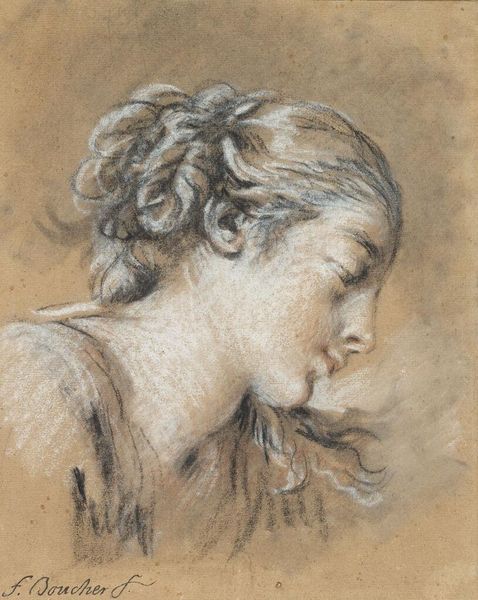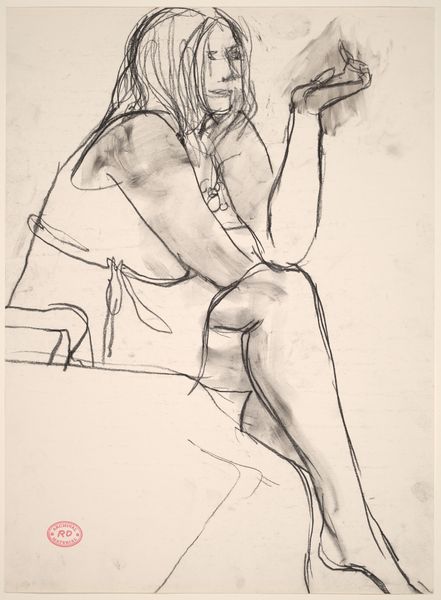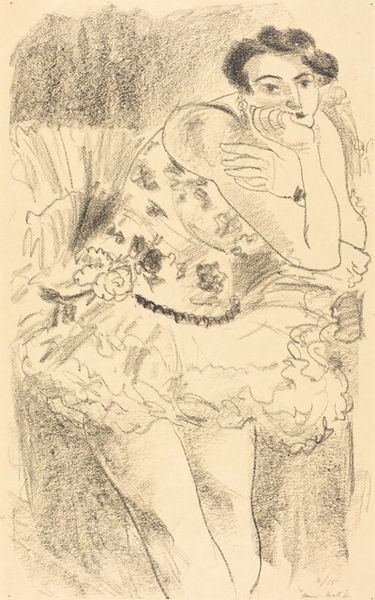
drawing, pencil
#
portrait
#
drawing
#
intimism
#
pencil
#
academic-art
Copyright: Tsuguharu Foujita,Fair Use
Curator: This is an untitled portrait from 1931 by Tsuguharu Foujita, crafted with pencil on paper. Editor: The first thing that strikes me is its melancholy air. The woman's pose, with her face framed by her hands, speaks of a pensive, almost burdened state. Curator: Yes, and consider the drawing itself—the fine, delicate pencil work that builds up the form. Foujita, known for his unique blend of Eastern and Western styles, shows incredible draftsmanship. But look closely, notice how the lines define not just the figure but also create a sense of texture and weight. Think about the sourcing of materials too, where does the paper come from, where the pencils? Editor: Absolutely. The soft, almost ethereal quality lends it an emotional weight. The woman's features are stylized, yet her expression seems universal. There's something evocative in her gaze, as though she's carrying a cultural memory. Her clothes could belong to many periods. What kind of archetype is she embodying? Curator: That stylistic ambiguity could stem from Foujita’s positioning as a Japanese artist working in Paris during the interwar period. This was a time when mass production allowed more women access to fashion that blurred traditional markers of class—and the raw materials to draw and express new consumer identity became cheap. There’s almost a flattening, a democratization, in both subject and execution here. Editor: An interesting observation. It reminds me of pre-Raphaelite portraiture, especially in the facial structure and dreamy look. She could also be perceived as an 'every-woman', burdened perhaps by circumstance yet imbued with grace, something eternal that touches the heart. The hands are carefully arranged in a sort of melancholic gesture. What meaning can we derive from them? Curator: For me, it speaks to a complex negotiation between high art portraiture and the availability of accessible artistic means that allowed a wider group of women to participate as subject, author, or owner in art. It challenges the perceived hierarchy in arts and craft at the time and emphasizes accessible labor to consumers, which is often a complex social commentary. Editor: Food for thought! Foujita created an image brimming with symbolism. Its strength comes from balancing its surface simplicity with an emotive subject. Curator: Indeed. Foujita’s piece provides much to consider on how material availability informed aesthetic and identity representation, moving us beyond traditional analyses.
Comments
No comments
Be the first to comment and join the conversation on the ultimate creative platform.
